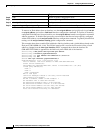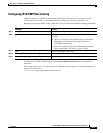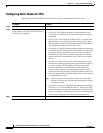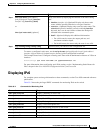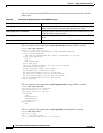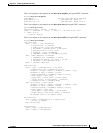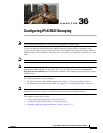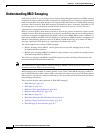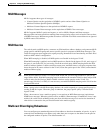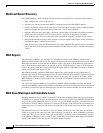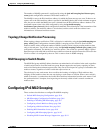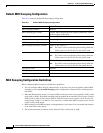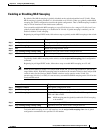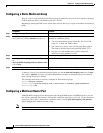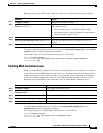
36-2
Catalyst 2960 and 2960-S Switch Software Configuration Guide
OL-8603-09
Chapter 36 Configuring IPv6 MLD Snooping
Understanding MLD Snooping
Understanding MLD Snooping
In IP version 4 (IPv4), Layer 2 switches can use Internet Group Management Protocol (IGMP) snooping
to limit the flooding of multicast traffic by dynamically configuring Layer 2 interfaces so that multicast
traffic is forwarded to only those interfaces associated with IP multicast devices. In IPv6, MLD snooping
performs a similar function. With MLD snooping, IPv6 multicast data is selectively forwarded to a list
of ports that want to receive the data, instead of being flooded to all ports in a VLAN. This list is
constructed by snooping IPv6 multicast control packets.
MLD is a protocol used by IPv6 multicast routers to discover the presence of multicast listeners (nodes
wishing to receive IPv6 multicast packets) on its directly attached links and to discover which multicast
packets are of interest to neighboring nodes. MLD is derived from IGMP; MLD version 1 (MLDv1) is
equivalent to IGMPv2 and MLD version 2 (MLDv2) is equivalent to IGMPv3. MLD is a subprotocol of
Internet Control Message Protocol version 6 (ICMPv6), and MLD messages are a subset of ICMPv6
messages, identified in IPv6 packets by a preceding Next Header value of 58.
The switch supports two versions of MLD snooping:
• MLDv1 snooping detects MLDv1 control packets and sets up traffic bridging based on IPv6
destination multicast addresses.
• MLDv2 basic snooping (MBSS) uses MLDv2 control packets to set up traffic forwarding based on
IPv6 destination multicast addresses.
The switch can snoop on both MLDv1 and MLDv2 protocol packets and bridge IPv6 multicast data
based on destination IPv6 multicast addresses.
Note The switch does not support MLDv2 enhanced snooping (MESS), which sets up IPv6 source and
destination multicast address-based forwarding.
MLD snooping can be enabled or disabled globally or per VLAN. When MLD snooping is enabled, a
per-VLAN IPv6 multicast MAC address table is constructed in software and a per-VLAN IPv6 multicast
address table is constructed in software and hardware. The switch then performs IPv6 multicast-address
based bridging in hardware.
These sections describe some parameters of IPv6 MLD snooping:
• MLD Messages, page 36-3
• MLD Queries, page 36-3
• Multicast Client Aging Robustness, page 36-3
• Multicast Router Discovery, page 36-4
• MLD Reports, page 36-4
• MLD Done Messages and Immediate-Leave, page 36-4
• Topology Change Notification Processing, page 36-5
• MLD Snooping in Switch Stacks, page 36-5



